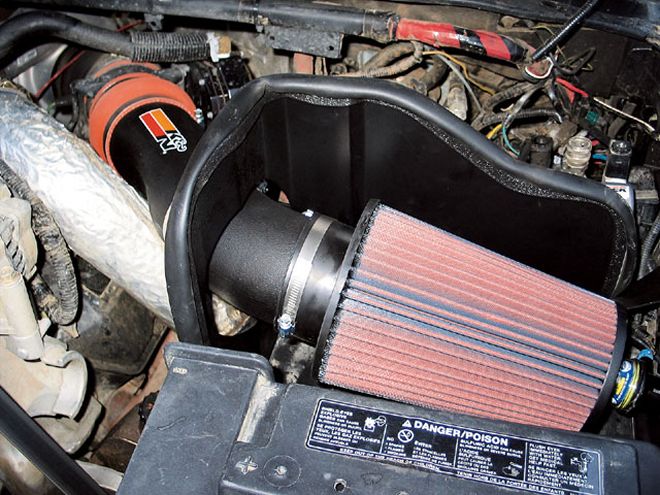
| shell Gas Station pump Number 12
If you watch the news, then you've probably heard, "Blah, blah...fuel prices are on the rise again...blah, blah." While the talking heads may be easy to tune out, we have to admit that diesel prices are on the rise and reaching three dollars per gallon in many areas. That doesn't mean you have to sit back and watch your wallet drain. You can beat the system, and we're not talking about detaching from the grid and converting freedom-fry grease in your backyard. This article is about maximizing the efficiency of your average performance diesel truck and getting the most spark-less bang for each buck spent at the No. 2 pump.

| air Filter pink Air Filter
1. Go With the FlowA clean air filter makes it easier for your engine to breathe, which means it will run more efficiently. Aftermarket filters allow better flow than the factory paper, but this comes with the drawback of not capturing all the particles the stock paper will trap. Whatever you decide to use, make sure you keep it clean. According to the EPA, replacing a clogged unit can improve your mpg by as much as 10 percent, but the filter is just one piece in the efficient engine puzzle.
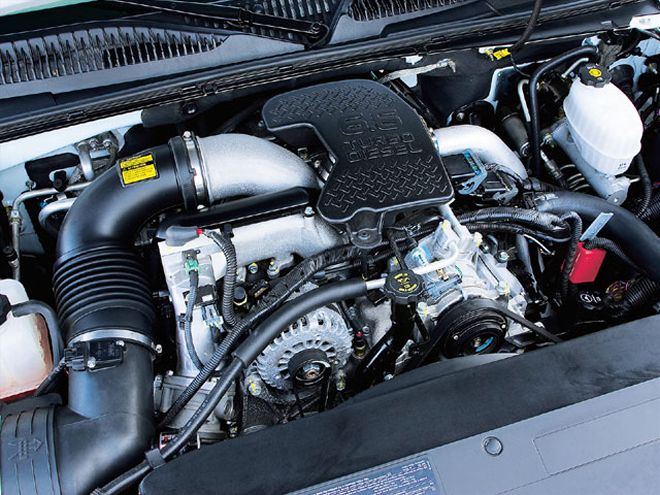
| aftermarket Intake new Intake
2. Breathe InUpgrading your intake is a great way to increase efficiency. Factory units are made of plastic and often have accordion-style bends and narrow sections that can restrict airflow. Aftermarket intakes maximize the air pathway while minimizing the distance from the filter to the engine. Cold-air intake setups are best because you won't end up with hot underhood air in the mix, just clean, cool air from Mother Nature.
3. Breathe OutAn exhaust system as big as a water main looks and sounds cool, plus it helps keep your engine running at a lower temperature. Driving with a low Exhaust Gas Temperature (EGT) is essential to the longevity of your powerplant; plus it means you are maximizing your efficiency. Another advantage to a free-flowing exhaust is the reduction of backpressure on your turbo(s), which allows the compressor(s) to spool up faster and reach the target boost pressure with less effort.
4. No More Idling!Not only are you annoying your neighbors with half-hour warm-ups when it's 70 degrees outside, but you are wasting fuel. Idling achieves zero miles per gallon-it's a geographic fact. Modern diesel engines are designed to start up quickly each time you turn the key, even in cold weather. Modern diesel trucks will get up to operating temperature in a matter of minutes, and one of the best ways to speed the process is to start driving with a light right foot. There just aren't many situations where extended idling is necessary. If it's 55 degrees outside, don't leave your truck running in the driveway before work. It's noisy, it wastes Rudolph's favorite fuel, and you are just asking for someone to hop in and steal your rig.
5. Contents Under PressureBefore you roll out of the driveway, make sure your tires are properly inflated. Squishy meats not only reduce your mpg, but they also tend to get hot, which can lead to a blowout. One of the reasons hybrid cars get so many miles out of each gallon is because they ride on narrow tires made with rock-hard rubber. We're not suggesting you install pizza-cutters on your rig and pump them to 80 psi. Just make sure your current tires aren't mush. The Feds say you lose four tenths of a percent on your mpg for every psi missing from your set of tires.
6. Weekend 'WheelersIf you only hit trails on days that start with an "S," you should consider investing in a set of street tires, or at least some all-terrains that can be used on- and off-road. Running soft, chunky tires increases your rolling resistance, and that hurts mpg. Giant tires and wheels also increase the mass of your truck, which means it will take more energy to get moving in every situation. When shopping for wheels, keep their weight in consideration. Forged aluminum rims are light yet strong enough to support large trucks.
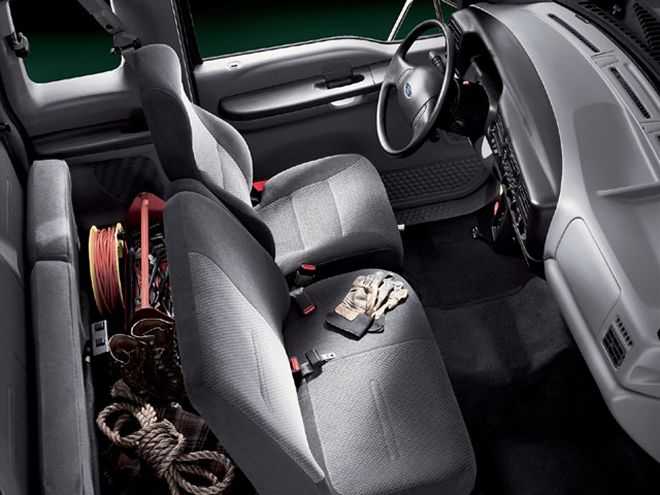
| interior lightening Weight
7. Lighten UpSpeaking of weight, carrying a giant diamond-plate toolbox that never gets used is like dragging a small anchor. Toss everything you don't need out of your truck. Say adios to items that are not safety-related but are increasing your curb weight. When a job is done, take your tools out of the cab until the next time you need them. You can also put your truck on a diet with lightweight replacement parts like the wheels mentioned above or a fiberglass hood. Unnecessary weight adds up and will reduce the efficiency of your rig in all types of driving.
"Get the most spark-less bang for each buck spent at the No. 2 pump."
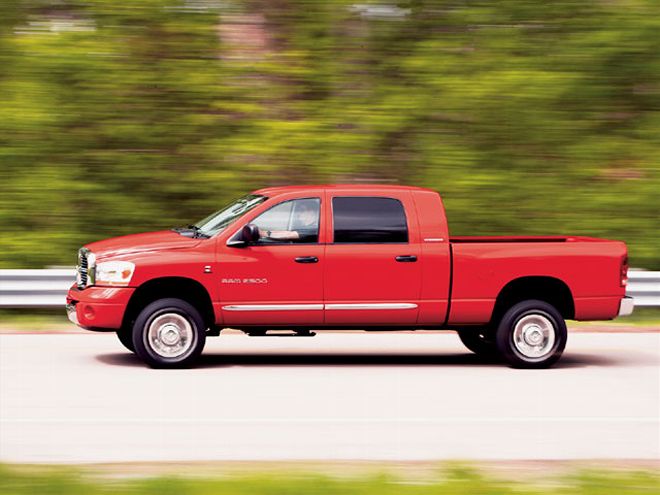
| red Truck side View
8. Lighten Up (Really)Aggressive driving kills...your mileage. You shouldn't expect to get 20 miles to the gallon when you are at the drag strip or plowing through a mud pit. So, save the wide-open-throttle action for extracurricular activities and save gallons during your daily driving. Stop-and-go traffic is the archrival of mpg. If your commute is slow, then you are doing a lot of idling in traffic. If possible, try to adjust your work schedule so you minimize your time spent in gridlock. You'll save fuel, and possibly, your sanity. Then, try to keep your right foot light while commuting. You don't have to smoke the back tires around every corner.
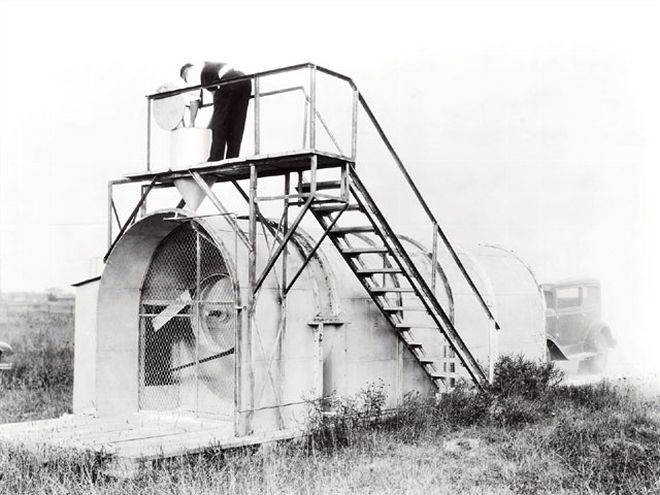
| fuel Tank man Checking Tank
9. OD and CCIt's not the name of a cheesy lounge act-it's what you should practice on the highways. Keeping your Overdrive on, and using the cruise control will help you maximize mpg. If you're not towing, don't use the tow/haul setting. Even if you are towing, using Overdrive gears can help you save fuel on flat stretches of highway where you don't need the power of lower gears. Using cruise control should help you maintain a constant speed, which is good for increasing mileage, but some terrains can outsmart the computer. If you notice the tranny is shifting like a madman and revving the engine more than necessary, let your right foot control the throttle until you reach another easy stretch of highway.
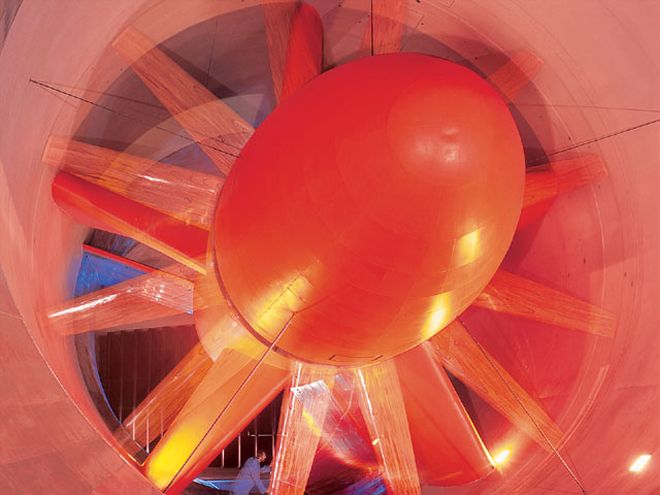
| gm Wind Tunnel salmon Color Tunnel
10. Chip It. Chip It Good.Aftermarket programmers and chips allow you to capitalize on the efficiency of your powertrain, including aftermarket upgrades. Many of them have economy settings that will provide good mpg and still give you more power than a stock truck. One drawback to this upgrade is the temptation to play Speed Racer every day. Sure, it's fun, but be ready to pay at the pump every time you put the truck in race mode and mash the go pedal.
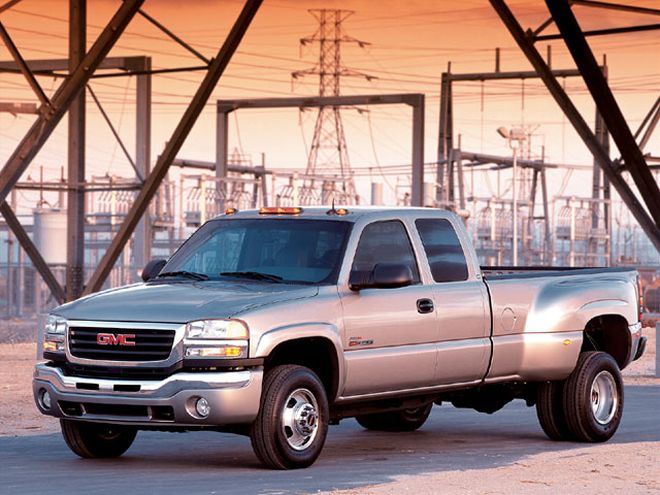
| gmc Truck front View
11. Be SlickAerodynamic drag is your enemy. Energy spent pushing air equals wasted fuel. Does that bug deflector really keep your windshield clean? Or does it just catch wind? Do you drop your tailgate to prevent wind turbulence in the pickup bed? Does it actually work? You should consider installing a tonneau cover on the bed. Not only will you make the truck more aerodynamic, but you'll be able to lock cargo in the bed, which means no more parking near restaurant windows to keep an eye on your stuff.
"Manufacturers have been studying aerodynamics for decades. Compare the picture of a GM wind tunnel in 1930 to the 4,500hp monster in use today."
12. Order a ManualYep, even with all the advancements in automatic transmissions over the years, slushbox-equipped trucks still can't achieve the same mileage as those with manuals. Automatics require some slippage during operation-since you can't disengage the clutch at stoplights and since energy is neither created nor destroyed-which means some of your diesel power is just being turned into heat. In addition to saving some diesel, ordering your truck with a stick poking out of the floor can also help you save money on brakes, and rowing the gears will make you more appealing to the opposite sex.
13. Sweat It OutThis hint is only for the hard-core diesel sippers: Turn off your air conditioning. The fuel saved is not worth showing up with a sweat-drenched back, but if the mercury is not too high and the vent setting is doing the job, then keep the A/C off and you won't waste diesel power turning the compressor. Please don't torture your passengers to save a few pennies. The weight of carrying passengers is already hurting your fuel economy, so what's the point of making them miserable? Heck, take up a collection for running the A/C, if you must. We're sure they will throw a couple of bucks your way in exchange for some cool air in the cab during your road trip.
14. Go SyntheticAnything you can do to increase the efficiency of your drivetrain will help you save fuel. This includes making sure all your moving parts are able to spin as freely as possible. Synthetic lubricants in your engine, transmission, transfer case, and differentials will help your mpg because dead dinosaurs tend to have debris in the mix, and more particles in the fluid means more friction. Synthetic fluids are so efficient, they can even result in higher horsepower and torque with no other modifications. They also don't have to be changed as often as petroleum lubricants, so, in the long run, you'll save even more money.
15. Low-ride-rrrResist the urge to put a leveling kit on your truck! The raked factory stance was designed to keep your vehicle aerodynamic-especially when carrying a load in the bed. In fact, lowering your rig from the stock ride height could help reduce wind-resistance because less air will get trapped in the undercarriage. So, if you are not opposed to riding down low with John Q. Public, de-jack your truck and get it down in the weeds. If you must lift your truck, keep in mind that every inch over the stock ride height will allow more air to be trapped under your rig on the highways. Ten-inch kits may provide the look you want but will definitely catch more wind than an off-road-capable 4-inch lift.
 | shell Gas Station pump Number 12
If you watch the news, then you've probably heard, "Blah, blah...fuel prices are on the rise again...blah, blah." While the talking heads may be easy to tune out, we have to admit that diesel prices are on the rise and reaching three dollars per gallon in many areas. That doesn't mean you have to sit back and watch your wallet drain. You can beat the system, and we're not talking about detaching from the grid and converting freedom-fry grease in your backyard. This article is about maximizing the efficiency of your average performance diesel truck and getting the most spark-less bang for each buck spent at the No. 2 pump.
| shell Gas Station pump Number 12
If you watch the news, then you've probably heard, "Blah, blah...fuel prices are on the rise again...blah, blah." While the talking heads may be easy to tune out, we have to admit that diesel prices are on the rise and reaching three dollars per gallon in many areas. That doesn't mean you have to sit back and watch your wallet drain. You can beat the system, and we're not talking about detaching from the grid and converting freedom-fry grease in your backyard. This article is about maximizing the efficiency of your average performance diesel truck and getting the most spark-less bang for each buck spent at the No. 2 pump.
 | air Filter pink Air Filter
1. Go With the Flow
| air Filter pink Air Filter
1. Go With the Flow | aftermarket Intake new Intake
2. Breathe In
| aftermarket Intake new Intake
2. Breathe In | interior lightening Weight
7. Lighten Up
| interior lightening Weight
7. Lighten Up | red Truck side View
8. Lighten Up (Really)
| red Truck side View
8. Lighten Up (Really) | fuel Tank man Checking Tank
9. OD and CC
| fuel Tank man Checking Tank
9. OD and CC | gm Wind Tunnel salmon Color Tunnel
10. Chip It. Chip It Good.
| gm Wind Tunnel salmon Color Tunnel
10. Chip It. Chip It Good. | gmc Truck front View
11. Be Slick
| gmc Truck front View
11. Be Slick